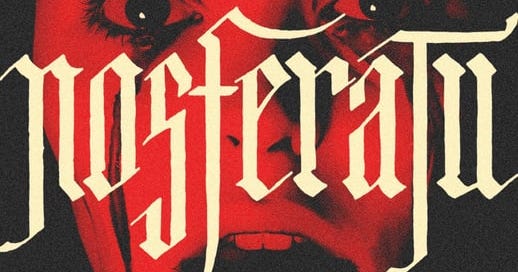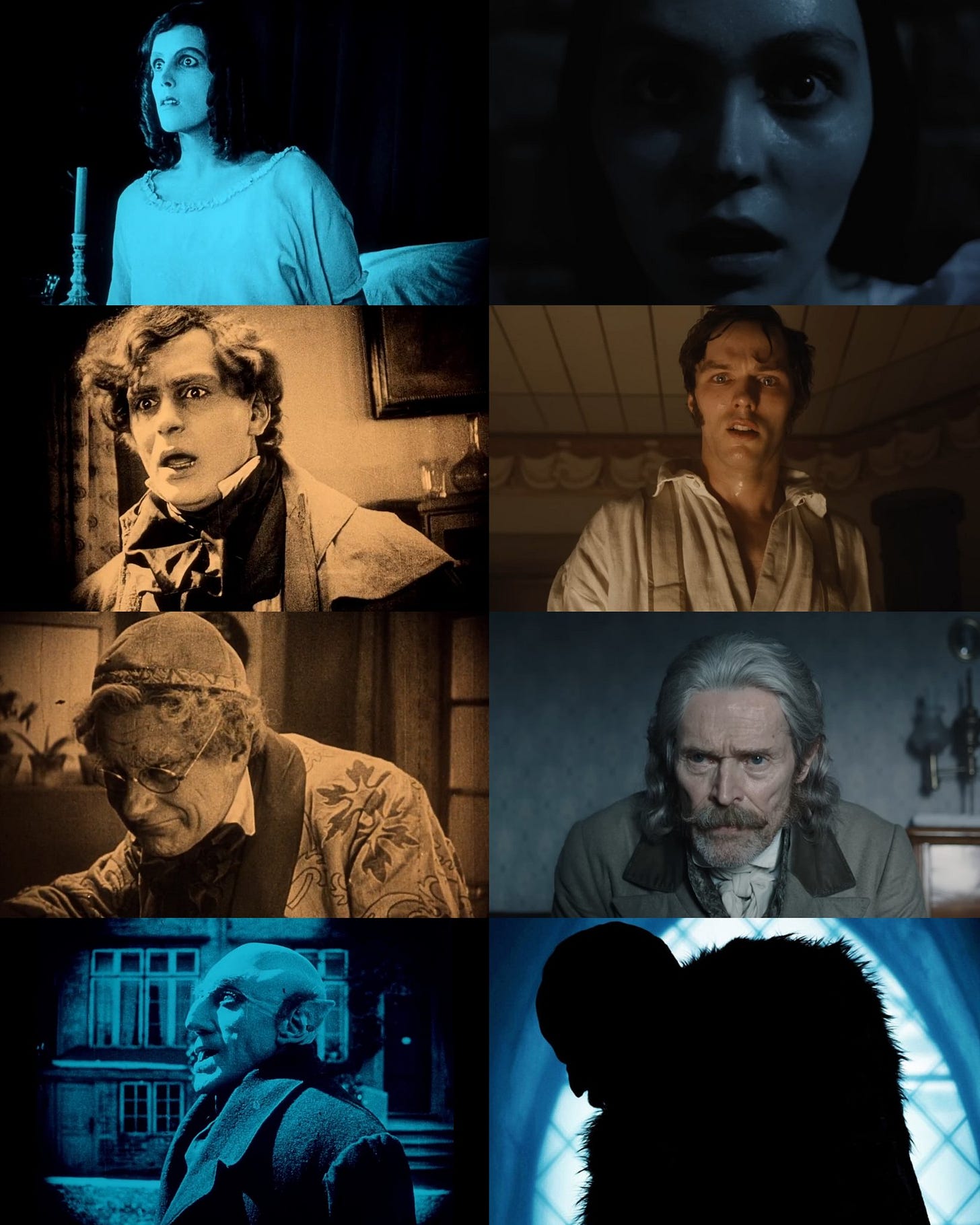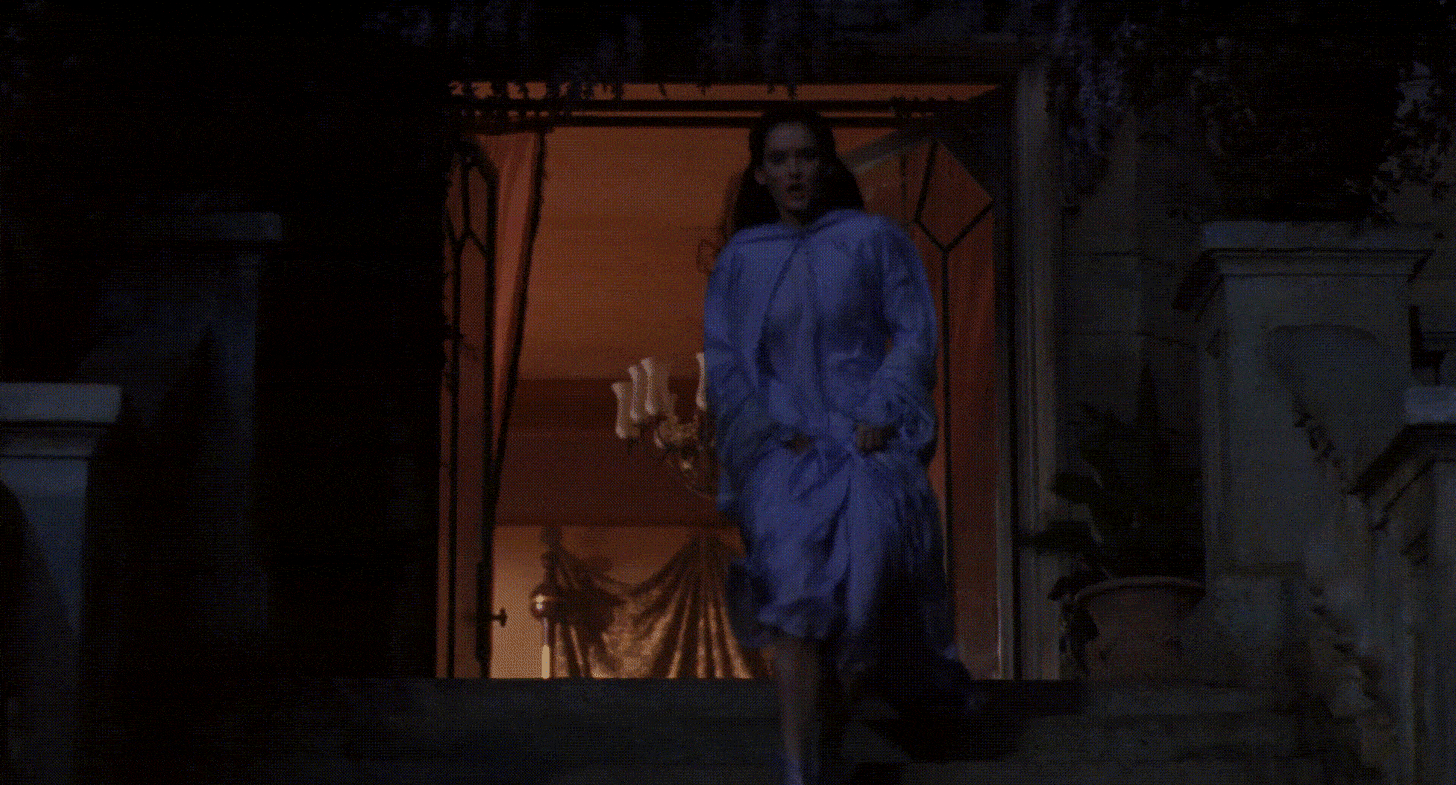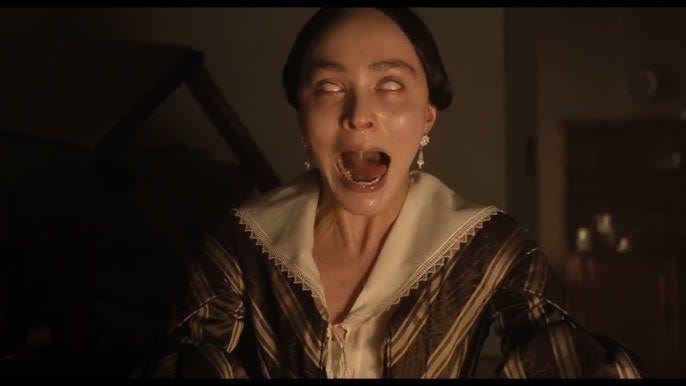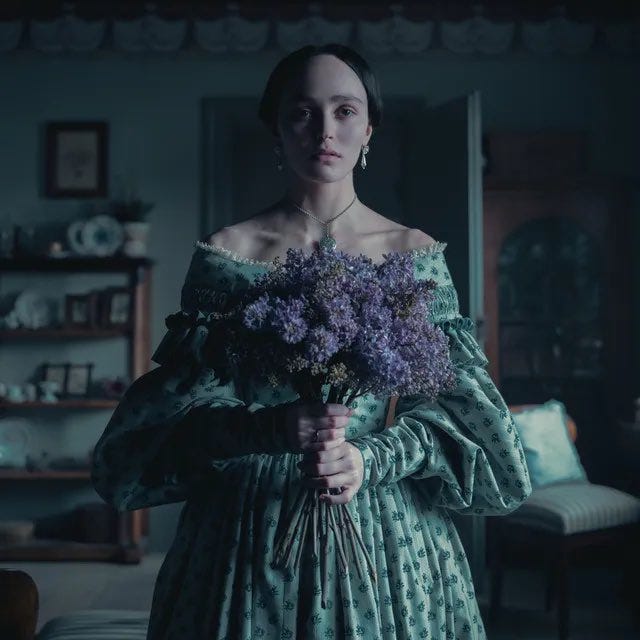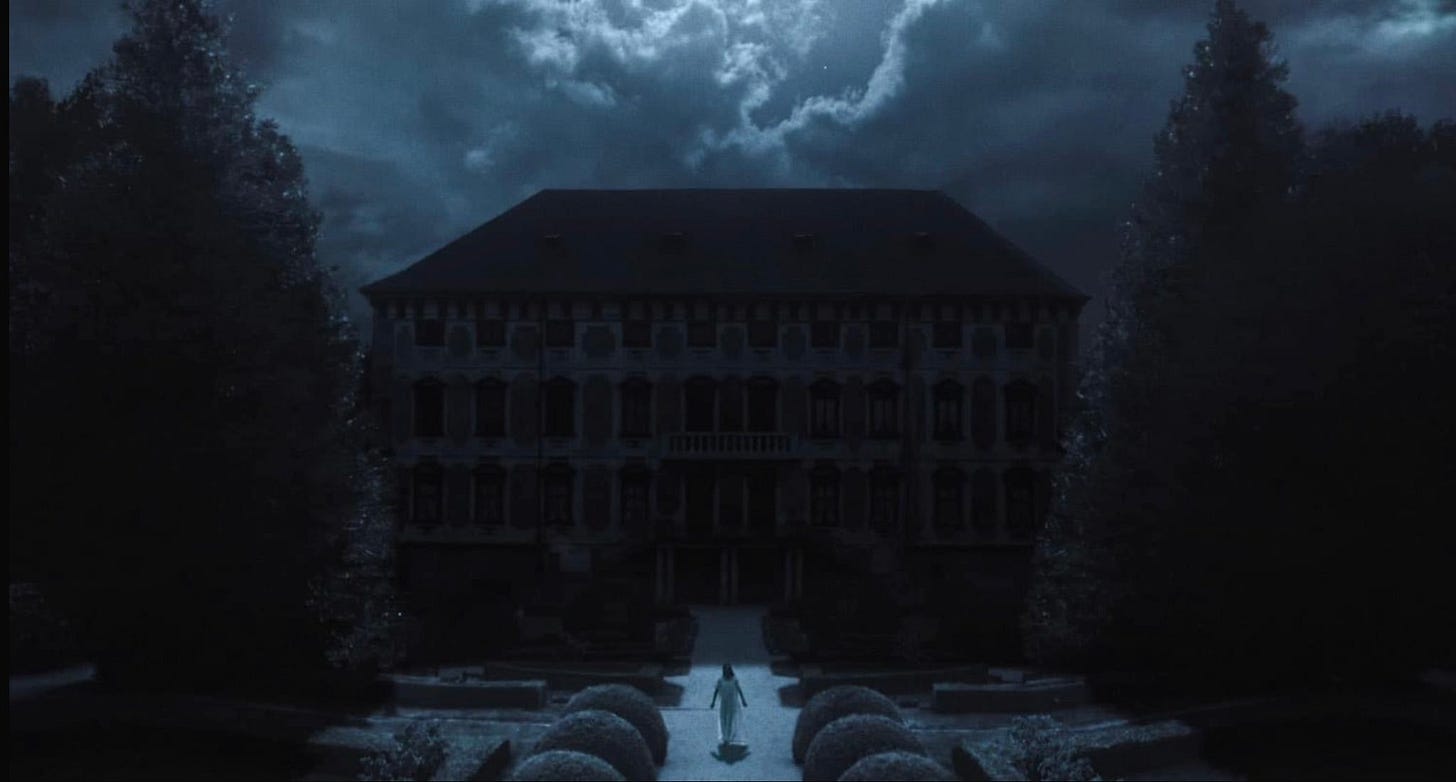Another Robert Eggers Classic.
I’m not much of a film reviewer, so bear with me. I’d like to start at the beginning here, as I think that having some context into the original Nosferatu and Eggers’s body of work makes this film a little more appreciable. I’ll keep these brief so that we can talk about the movie at hand, but I still think they help set the tone.
Spoilers ahead I guess, but this is an extremely faithful adaptation of a genre-defining movie that’s over 100 years old, and has lived rich in the consciousness of horror enjoyers ever since:
Nosferatu (1922)
The original Nosferatu, a silent film, was an illegal reproduction of Bram Stoker’s 1897 novel Dracula. Set in Germany to skirt the copywrite laws of the time, Thomas Hutter (as opposed to Dracula’s Jonathan Harker) sets out to Transylvania to secure the purchase of an estate in the city of Wisborg, Germany, located on the Baltic Sea, for one Count Orlok.
The original Nosferatu takes some liberties with its adaptation of Dracula, most notably that Orlok himself portrays a sort of atavistic evil, something almost primordially unsettling about the character. Contrast this with the suave Count Dracula from the original. Additionally, Orlok tends to kill his victims instead of turning them. He is depicted bringing a plague across the Baltic with him, which is used to explain the deaths of his victims. Finally, he dies when he comes into contact with the sun, whereas Dracula is merely weakened.
The Filmography of Robert Eggers
Eggers has made a name for himself creating arthouse-style historical horror films. Thematically, his filmography is very literal and tends to meet the subjects at their level. That is to say, there is no post-modern “distance“ between the subjects, their surroundings, and their beliefs…
Of course witches are real in puritan New England. Of course convivence with the Odinic pantheon is a normal part of life in the Northman. Of course you’re gonna crank hog to the voluptuously-carved scrimshaw mermaid in The Lighthouse. It’s as natural as rain to them. We’re viewing these movies by being integrated into their point of view, not above it or distanced from it. This extreme sincerity is in its own way a transgressive take on storytelling through film.
Another key to understanding Eggers is that he doesn’t intend to appeal to everyone. Not a single one of his movies panders to a wide audience. He has a vision of who his films are for, and if that’s not you then that sucks and you’ll probably find yourself feeling alienated (AKA skill issue).
Nosferatu (2024)
Gothic horror is BACK.
The opening scene above shows a teenage Ellen Hutter (Mina in Dracula) praying for something, anything, to come comfort her in a time of need. Instead of a benevolent companion, she instead attracts the sexual attention of a deeply evil, ancient spirit (erm problematic age gap much?).
This opening scene really is crucial to the movie, as it differentiates this rendition from those of the past by centering Ellen as the main protagonist (instead of Thomas (Johnathan Harker)). This is her story, her “tragic love triangle of obsession with a true demonic force”.
Ellen, now pledged to Count Orlok, is haunted through time and space by the most unholy of entities, and must find a way to shake the curse that haunts her every breath.
I’ll stop here to keep it as spoiler free as possible, and instead turn our attention to some of the thematic and cinematographic work:
Light and Shadow
You can’t tell a vampire story without the interplay between light and shadow. Eggers weaponizes the shadows to create a creeping feeling of dread throughout the film’s progression. I’m almost certain this would’ve been a black-and-white movie if he thought he could capture the lights and shadows vividly enough.
Instead, we get approximately 3 colors in this movie: blue, orange, and brown, all used to a wondrous effect. Even then, the blue and orange hues are largely a callback to the original Nosferatu, where dye tinting was used differentiate between night and day:
This limited color palette forces the eye to focus on the shades and how they interplay with the characters. I would *highly* recommend watching this in the theater for this reason.
My sister in-law is a writer for a big magazine in NYC, and was given a pre-screening a few days in advance which we watched during our Christmas celebration. It was the slightest bit over-exposed and seriously killed off much of the oppressive, nausea-inducing, blackness which accompanies Orlok’s screen appearances.
Light and shadow of course extend beyond their physical manifestations as well — Willem Dafoe’s Dr. Van Franz (Van Helsing) at one point says something along the lines of “if we are to tame darkness we must first face that it exists,” which calls to mind the Jungian integration of the shadow… Unfortunately, I’m butting up against my limits of properly articulating deeper themes here, so that’s all I can really glean.
Desire
Vampires are an inherently horny medium. Francis Ford Coppola’s Bram Stoker’s Dracula (1992) is perhaps the horniest movie I’ve ever seen (watched for the first time sitting next to my mother in law too, hella awkward).
While Nosferatu continues the theme of desire as a motivating force, we primarily see this represented through Orlok’s insatiable hunger for Ellen. Remember here that Orlok is a much more primitive rendition of the usually suave and smooth-talking Dracula, at one point saying “I am nothing but an appetite“. His desires are more base, ultimately becoming an unchecked, all-consuming obsession that leads to his demise.
The scene where Orlok feeds on Thomas is maybe one of the most unsettling of the movie. Extremely unsettling, almost like watching a sexual assault combined with the (Romanian folklore accurate) decision to have Orlok feed by biting the chest. Guttural, lustful, disgusting.
On the other hand, Ellen’s desire for a companion left her with a great shame (presumably of her sexual desires) that she is forced to carry. Her love for Thomas (described by Van Franz as “animalistic urges“) is overwhelming to the point where she frequently acts in what might be called a sinful manner for the Gothic Germany of the mid-1800’s. In classic Eggers fashion, this raw desire is matched to the period of the story, adding a thick layer of repression that squeaks out here and there to typically to ill effect.
Acting
-Nicholas Hoult acted his ass off. I have this image in my head of him as a sort of idiot goofball character (think the Menu, Mad Max Fury Road), so to see him portray terror so straight like that was crazy and revelatory. The man is incredible in this movie.
-I had some hesitations about Lily Rose Depp being cast as Ellen upon hearing so (both ability and aesthetically). She’s like the embodiment of SoCal fillerface in my mind. I was shocked to see how well it actually translated to her gothic bedrot socialite look. I thought she put on a hell of a performance too — very committed to the convulsiveness of her character, even if they were at times not particularly convincing
-Willem Dafoe absolutely murdered it as a crazy old guy. They should give him infinity crazy old guy roles.
-Aaron Taylor Johnson was mid
-Bill Skarsgard’s Orlok was incredibly well done. The voice work alone was off the charts. Not sure why they decided to cover him in prosthetics to the point that he was an entirely different person (why not just choose a Slavic actor at that rate?), but whatever, he’s perfect for playing a monster.
Cinematography
Not really much to say here except that it was really, really good. The carriage scene depicted further up was a particular standout. Stunning work all around. Pictures are worth a thousand words though, so here’s a few good ones:
Some Closing Thoughts
I’m a huge fan of Robert Eggers already, and I think with Nosferatu he managed to grow on what is already a considerable talent. The music, cinematography, and ambience were all skin-crawlingly perfect for a historical horror piece. The acting was largely excellent and the plot moved forward with pacing that generally made sense, with some dragging in the second act. I would give it a 4.5/5.
I’m itching to watch this movie again before it leaves theaters.
As a parting thought, I’ll leave you with the following letterboxd review for further ponderance:

